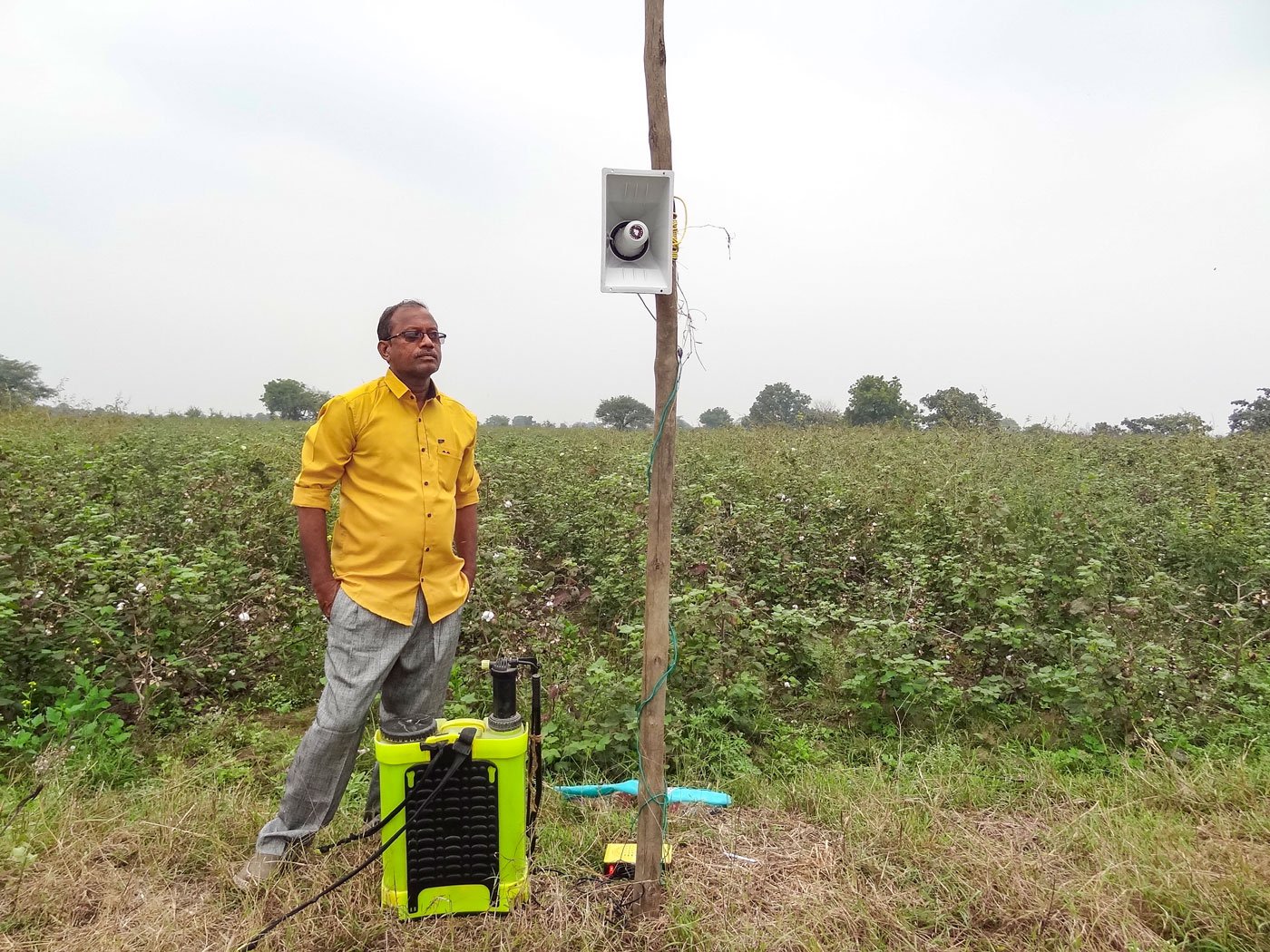A tiger roars. A dog barks. A multitude of shouting human voices fills the air.
Nothing unusual as we are roughly a 100 kilometres from the Tadoba Andhari Tiger Reserve (TATR) in Chandrapur.
What’s unusual is that the cacophony of animal and human voices is recorded sounds, coming off a loudspeaker in Mangi village. The megaphone is hoisted on a stick of cane and wired to a battery-operated pesticide spray-pump, in the middle of a cotton and toor farm here in rural Vidarbha.
“If I don’t play this alarm at night, wild boars or blue bulls [who are nocturnal creatures] will eat my crops,” says Suresh Renghe, the 48-year-old farmer talking about his latest ploy – a desperate attempt to frighten the wild animals. “They especially relish toor [pigeon-pea] and chana [black gram],” with devastating consequences for his harvest.
Unable to keep them out with fences, both solar and wired, he puts the gadget’s two-pin plug into the socket of the battery-operated spraying pump. Immediately, loud animal and human sounds rent the air.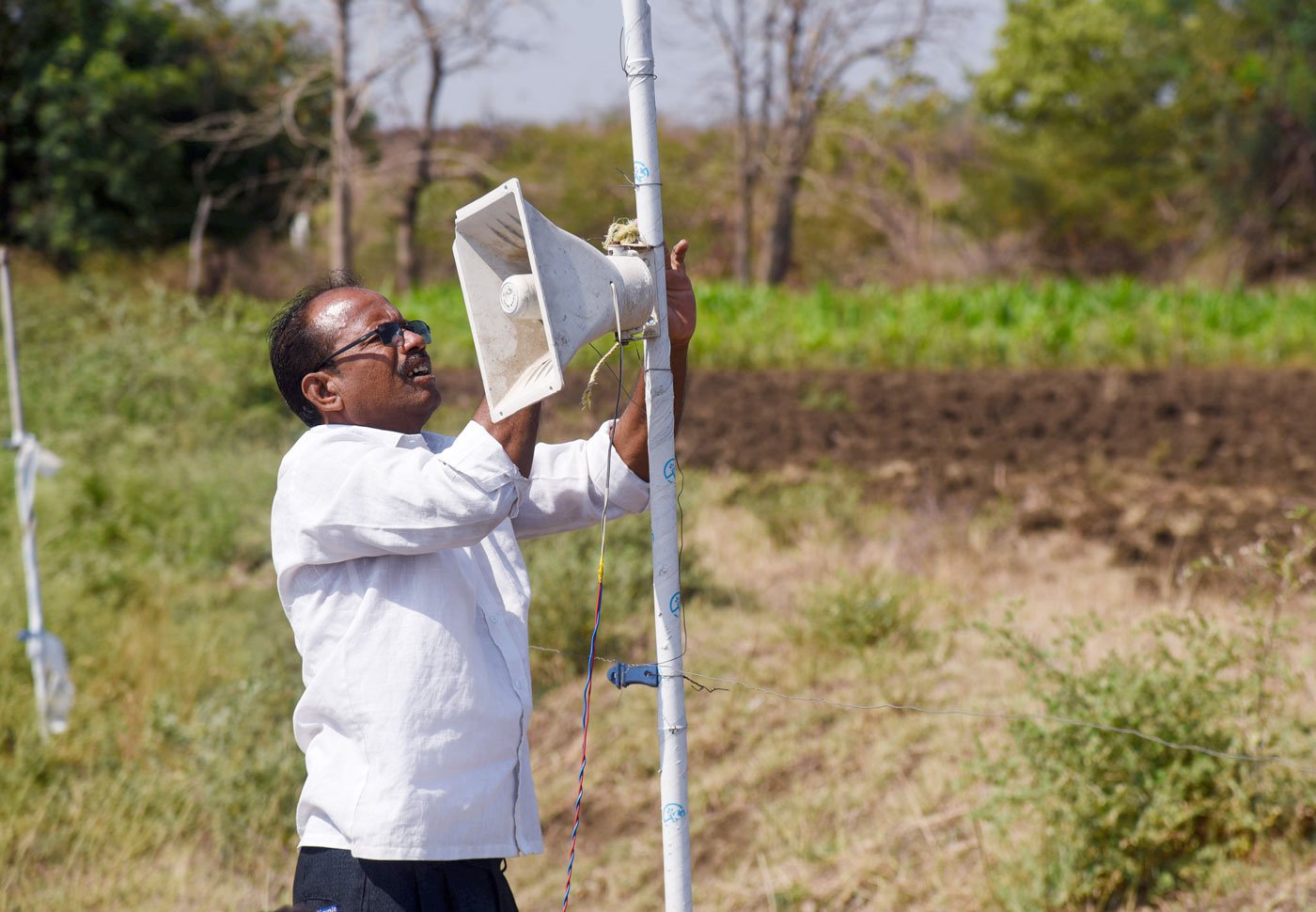

Suresh Renghe, a farmer in Mangi village of Yavatmal district demonstrates the working of a farm alarm device used to frighten wild animals, mainly wild boar and blue bulls that enter fields and devour crops
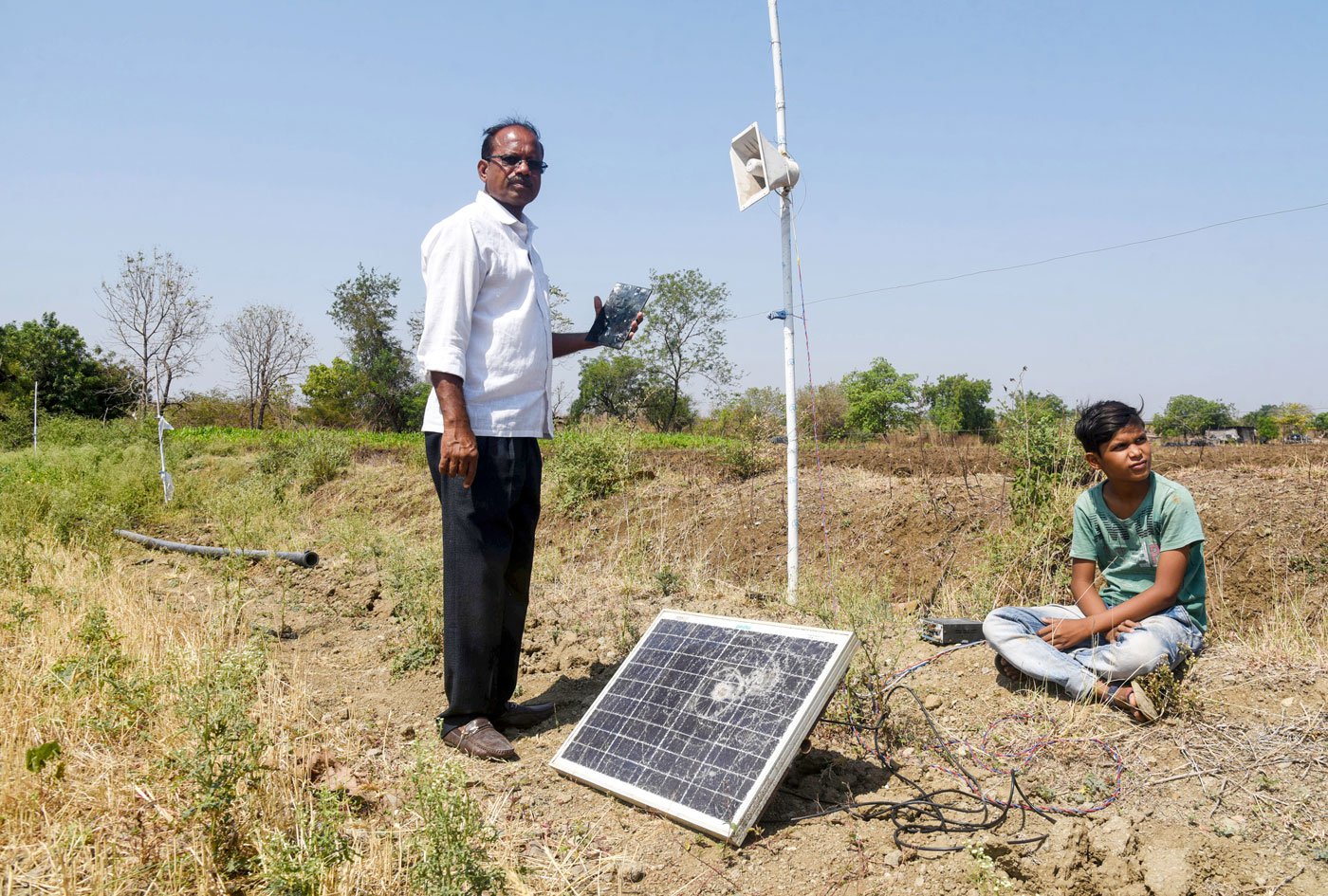
Renghe uses a mobile-operated solar-powered device that rings noises all through the night to deter the marauding wild animals
Renghe’s worry is for his 17 acres of farmland on which he grows a variety of crops – cotton, chana , toor , chillies, green gram, soybeans and groundnut, among others.
These innovative farm alarms are being deployed in hundreds of villages across rural Vidarbha to deal with the menace of marauding wild animals.
But they are not the only ones who it startles. “There have been instances of passing bikers and travellers panicking on empty roads,” Renghe quips as farmers around him giggle.
Mangi village is surrounded by small patches of shrub and teak forests. It’s off the Nagpur-Pandharkawda highway in Ralegaon tehsil of Yavatmal. To its eastern edge lies the TATR, which accounts for 82 of Maharashtra’s 315 tigers , and to its west is the Tipeshwar Wildlife Sanctuary in Yavatmal district. The reserve is home to not just tigers, but leopards, sloth bears, wild dogs, gaur, chital and sambar – all potential threats.
The village of about 850 people is a corridor between the two. The threat to Mangi is typical of the problems of villages surrounded by shrub forests, interspersed with agriculture lands. When the forests were dense, wild animals had water and food inside. Now, growing crops like Renghe’s are their hunting grounds.
“They should take them away or allow us to kill the wild animals,” say farmers who blame the forest department for the problem. “These are their [forest department’s] animals,” is a common refrain.
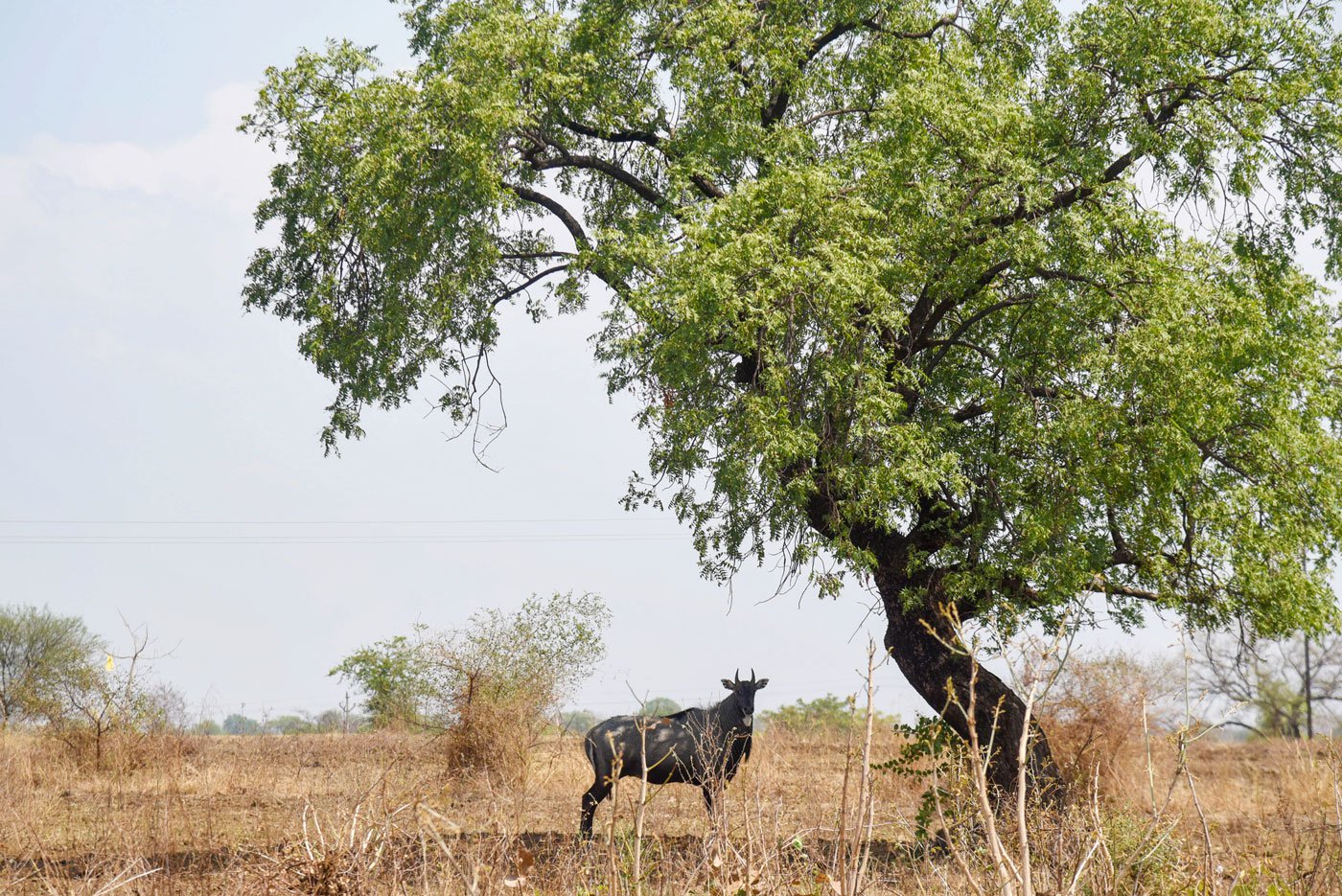
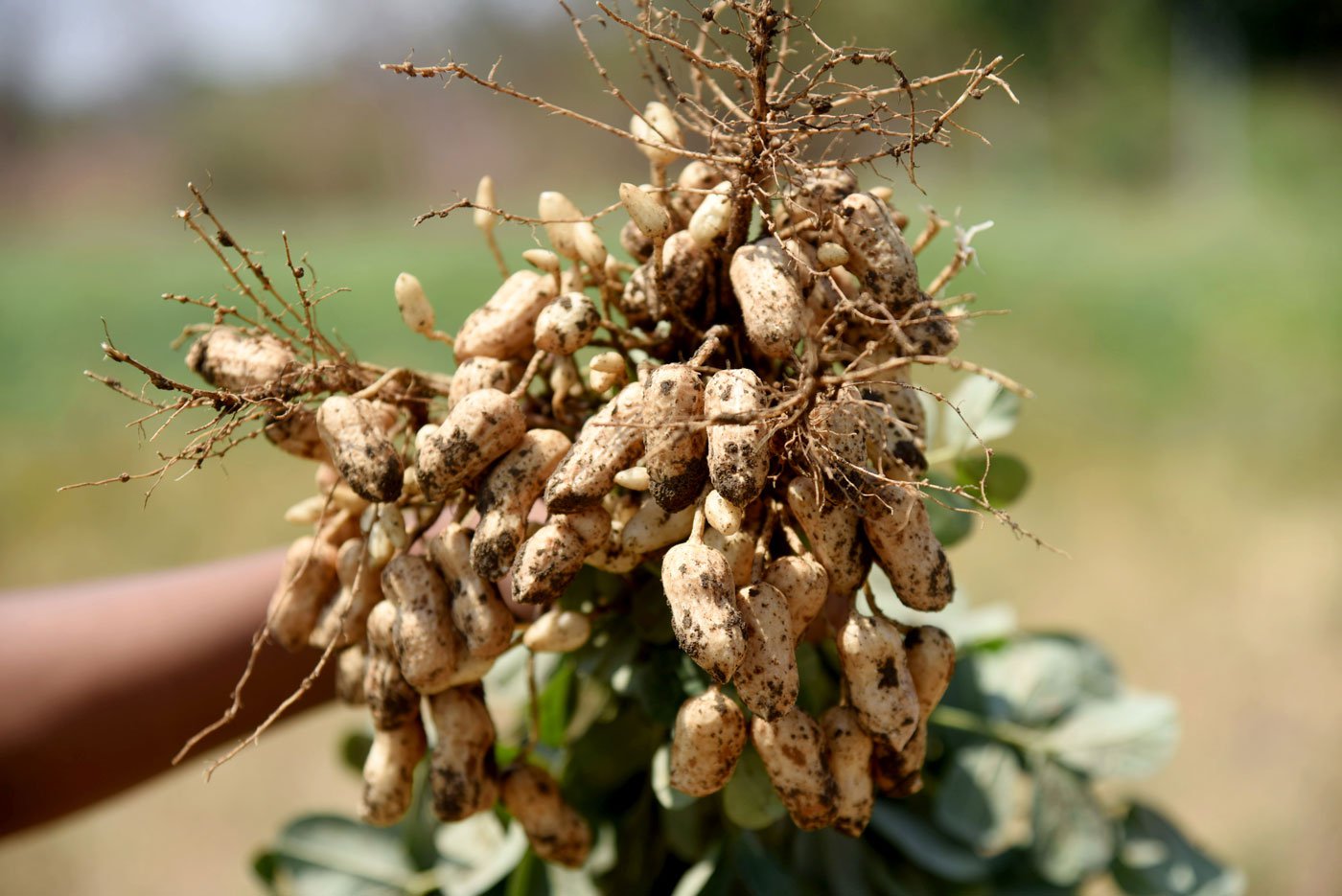
Left: A blue bull, also called neelguy , spotted at a close proximity to Mangi’s farms. Right: The groundnut crop is about to be harvested in Mangi. Farmers say groundnuts are loved by wild boars and blue bulls
Protected by the Wildlife Protection Act, 1972 , killing or trapping them can lead to “imprisonment for a term which shall not be less than one year but which may extend to seven years and also with a fine which shall not be less than five thousand rupees”. While the Act does have provisions for reporting crop loss due to wild animals, the procedure is cumbersome and the financial compensation is woefully inadequate. Read: ‘It’s a new kind of drought’
Usually, wild boars, deer and blue bulls come in large groups of a dozen, two dozen, or sometimes more. “Once they step into a field in your absence,” Renghe says, “they do a lot of damage.”
Human presence is a deterrent, but Mangi farmers no longer keep a vigil at night. They say it’s too taxing for their health and dangerous. Instead, these small devices are a big hit in the countryside.
“I can’t stay on the farm every night for health reasons,” says Renghe, “This is the alternative.” And it’s easy to operate, and affordable on your purse. The alarms create an illusion of human presence, but points out Renghe, “It’s not full proof; Wild animals invade and devour crops anyway.”
But this trick is better than nothing at all.*****
Farming in not just Yavatmal but large tracts of this eastern Maharashtra belt of the Vidarbha region known as a cotton country, is largely rainfed. However, talk of the Bembla dam, a major irrigation project nearing completion, at Babhulgaon close to Mangi village, will change things – water will run through canals to this village, igniting hopes of increased incomes from a double crop.
“Multiple crops mean extended availability of food for these wild animals,” Renghe says. “Animals are very intelligent and know they can come back to these farms again and again.”
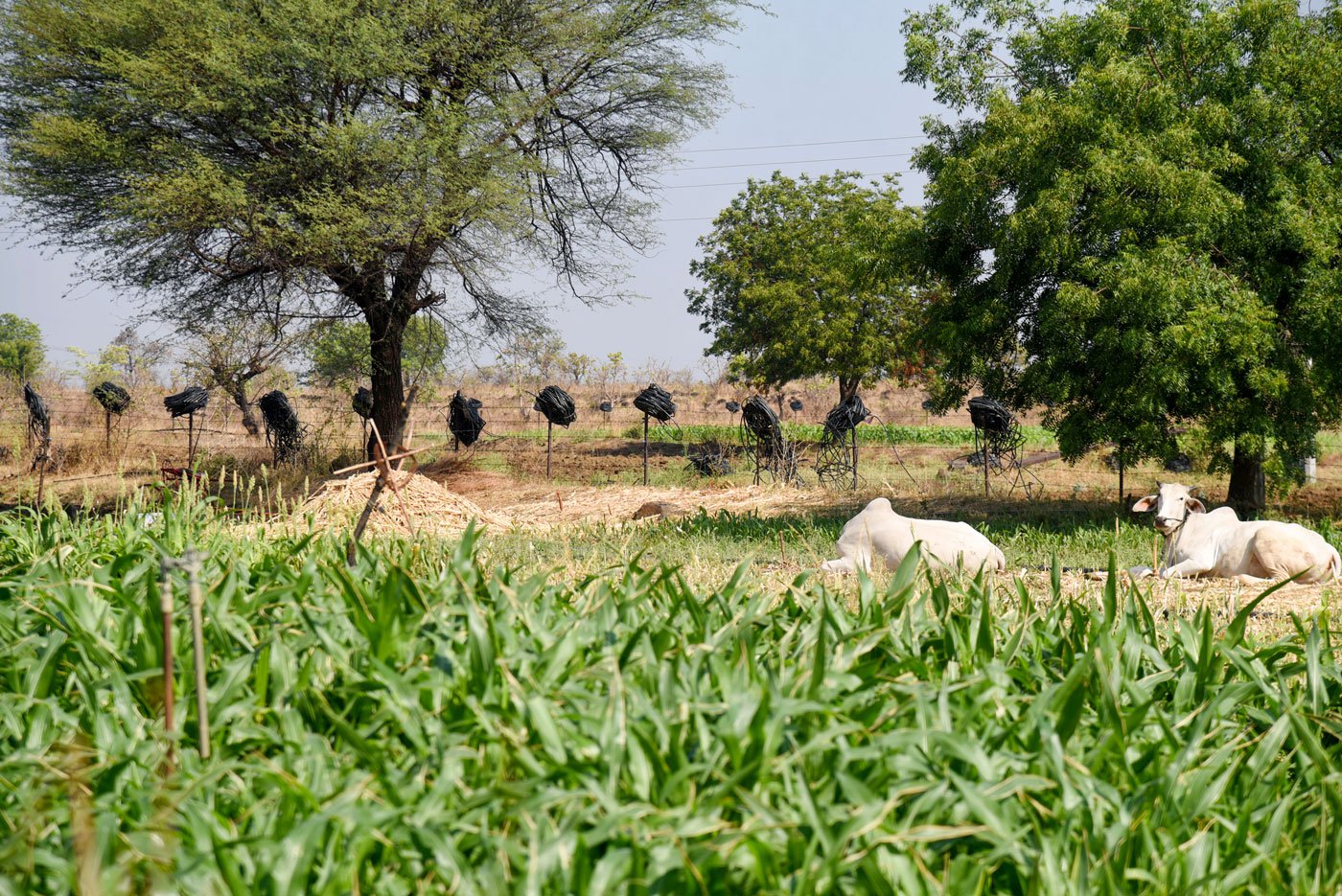
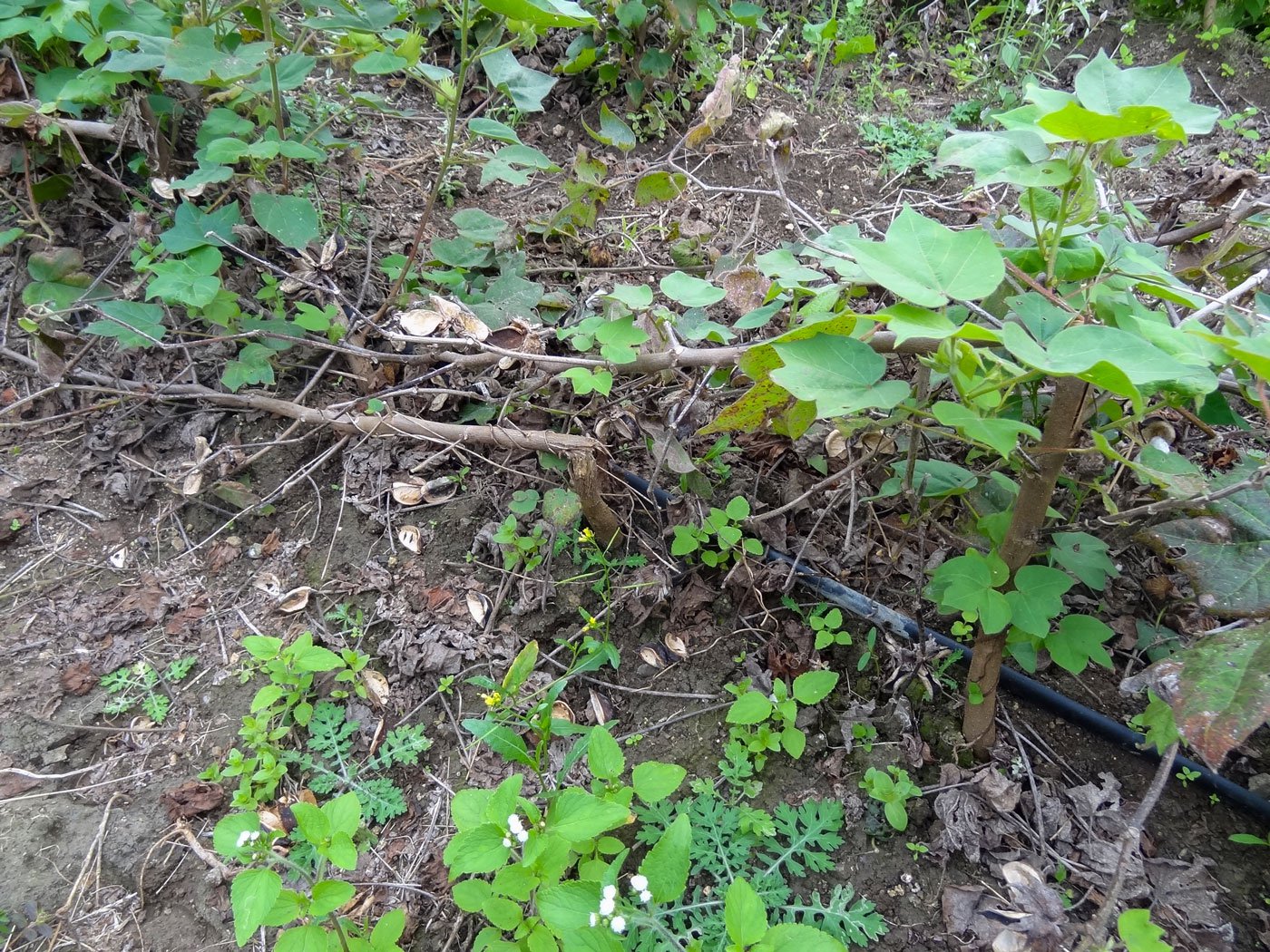
Left: Suresh Renghe’s 17-acre farm where he grows a variety of crops. Right: Signs that a herd of wild boars have furrowed through a crop of standing cotton, eating green bolls on a farm in Mangi village
This is predominantly a cotton and soybean growing belt in Yavatmal, known for high incidence of farmers’ suicides and engulfed by a raging agrarian crisis for over two decades. The lack of access to formal credit, growing indebtedness, rain-fed farming, price volatilities, dropping incomes, rising production costs are all serious worries. The intrusion of menacing wild animals is likened by the farmers to “unwelcome pests.”
In January 2021, when this reporter is visiting Mangi village, cotton’s first pickings – the white link plucked from the bolls – are over; the long toor beans are dangling off plants. A portion of Renghe’s field with chilly will mature in a month’s time.
When it’s time to harvest, he says he has lost significant amounts to wild animal raids. Between January 2021 and February 2023 – a period of two years – PARI visited Renghe on several occasions and he had suffered multiple crop losses due to wild animal raids.
In desperation, he invested in the small electronic box with a loudspeaker. The solar powered locally manufactured device is the latest on the market, along with cheap ones made in China. Popular and easily available in local shops, they cost Rs. 200-1,000 – the price depending upon quality, material, and battery-life. The gadget is the size of a regular doorbell and its battery lasts 6-7 hours and can be recharged even by the solar-powered spraying pumps. Normally, farmers recharge it in daytime and play it through the night, mounted on a pole in the centre of their fields.
Yavatmal is known for a high incidence of farmers’ suicides and a raging agrarian crisis. The intrusion of wild animals is likened by the farmers to 'unwelcome pests'
In the last year or so, this reporter found an astonishing variety of farm-alarm devices on farms across the large stretches of Vidarbha, bursting into sound at night.
“We started using these alarms a few years ago,” says Ramesh Sarode, a farmer with four acres in Mangi. He installed the device in addition to putting up several scarecrows on his field to protect his crops. “We tried bursting firecrackers throughout the day, but they are very expensive and impractical. This alarm is available in most local electronic shops,” he says.
All the farmers turn the gadgets on before going home in the evening. The electronic sound of animals booming out over the fields is audible from his home in the village a few kilometres away. But since that may not convince wily animals, Renghe has invented a wind-powered rotator fan that beats a steel plate held horizontally. He’s tied it to a wooden pole in another corner to make sure he’s covered all bases.
“ Manachya tasallisathi karto ji he [We do it for our own satisfaction],” says Renghe, smiling nervously as if the joke’s on him. “ Ka karta [What does one do]!”
The catch here is that while farm alarms have the sound, “there is no smell,” of humans or guard dogs, so it’s not always a deterrent to wild animals.
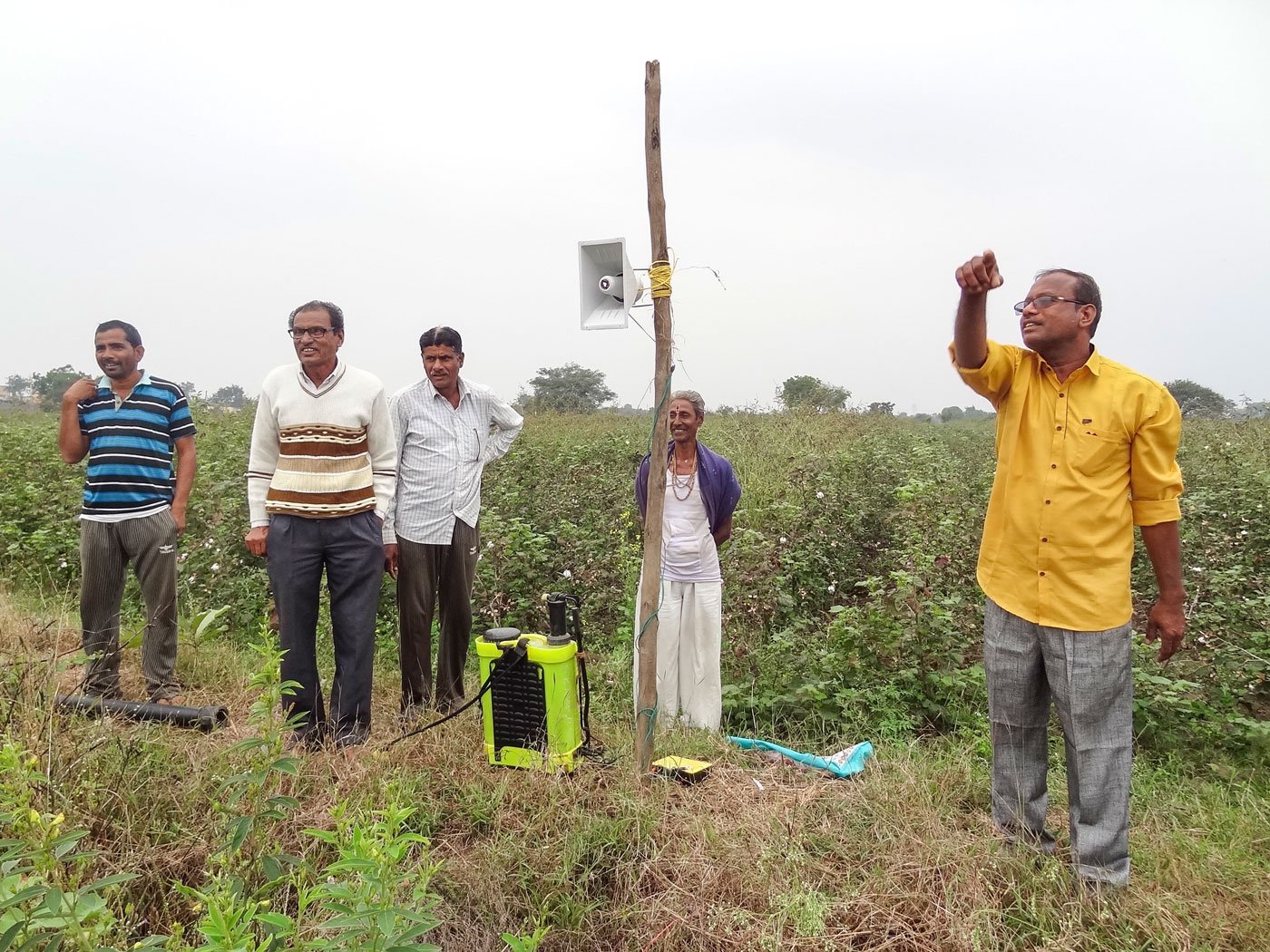
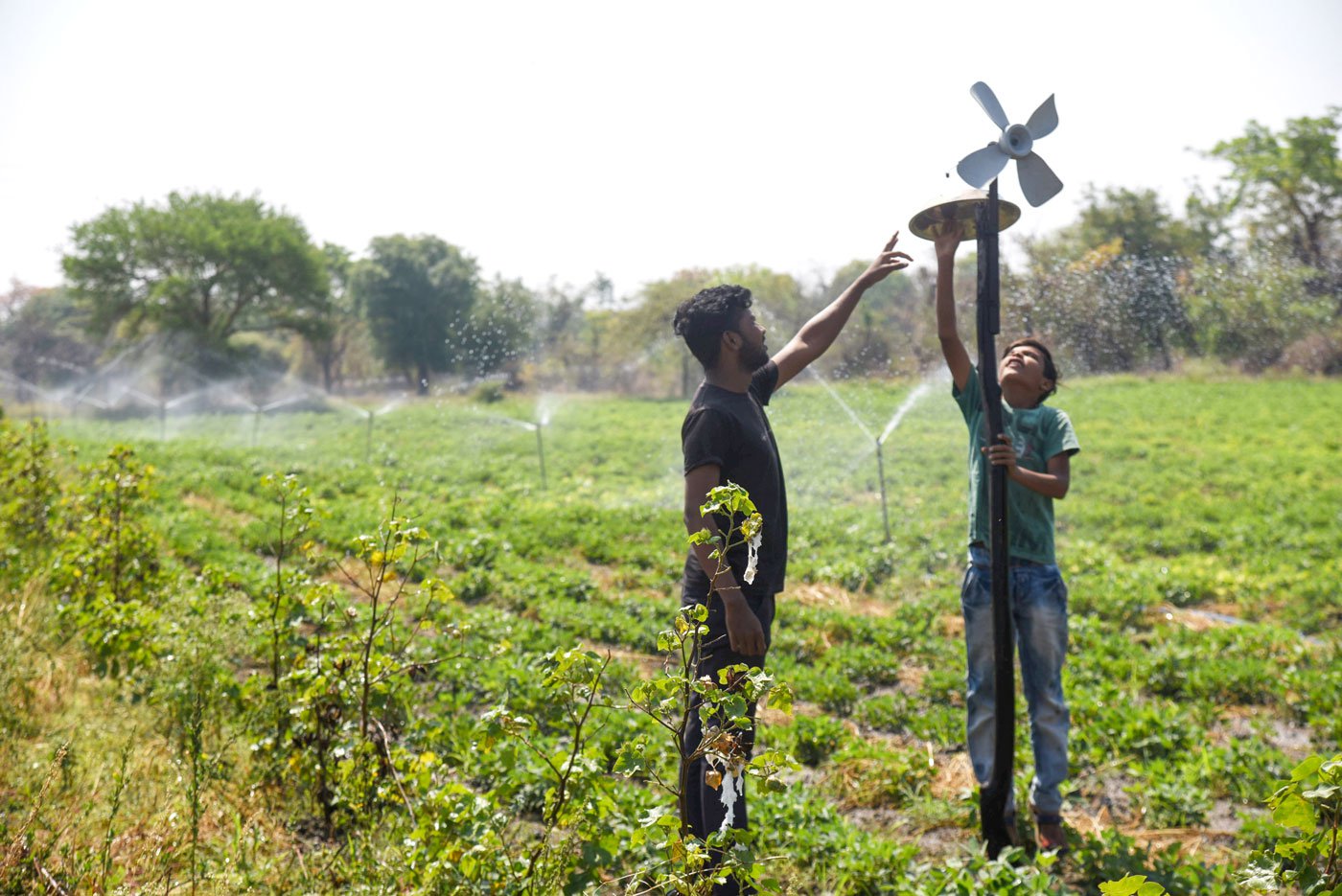
Left: Ramesh Sarode (white sweater), Suresh Renghe (yellow shirt) and other farmers in Mangi have found a novel way to keep out wild animals. They switch on a gadget connected to a loudspeaker and wired to a solar-powered spray-pump’s batteries through night. The gadget emits animal sounds – dogs barking, tiger roaring, birds chirping, in a bid to frighten the raiding herbivores. Right: Ganesh Sarode and his friend demonstrate a small device they’ve built to make noise – a small rotator beats a steel plate through the day as a substitute to a scarecrow
*****
“Crop losses could be 50 to 100 percent if we are not vigilant during harvest,” says Renghe.
In his local Varhadi , a dialect of Marathi, Renghe adds, “ Aji thye sappa saaf karte [The animals devour the entire farm].”
It’s mid-February 2023, and as we walk through his farm, not very far from his home, Renghe points to droppings - tell-tale signs of wild boars having ravaged a small patch of his rabi (winter) wheat crop.
Even chilly plants are not safe. “Peacocks eat chillies,” Renghe says, as we pass through rows of fully grown plants with red and green chillies hanging from them. “Don’t be swayed by their [peacock’s] beauty, they are equally destructive,” he adds. He also plants groundnuts on an acre or two and they are ready to be harvested by mid-April; wild boars love groundnuts.
Aside from the crippling crop losses, the alarms and batteries are an added expense, as are the nylon sarees draping the fences around the fields. Renghe shows us naphthalene balls tied in small cloth bundles to the bottom of plants – someone told him the strong smell repulses wild animals. He’s willing to give anything a try even if some of these weird tricks eventually turn futile.
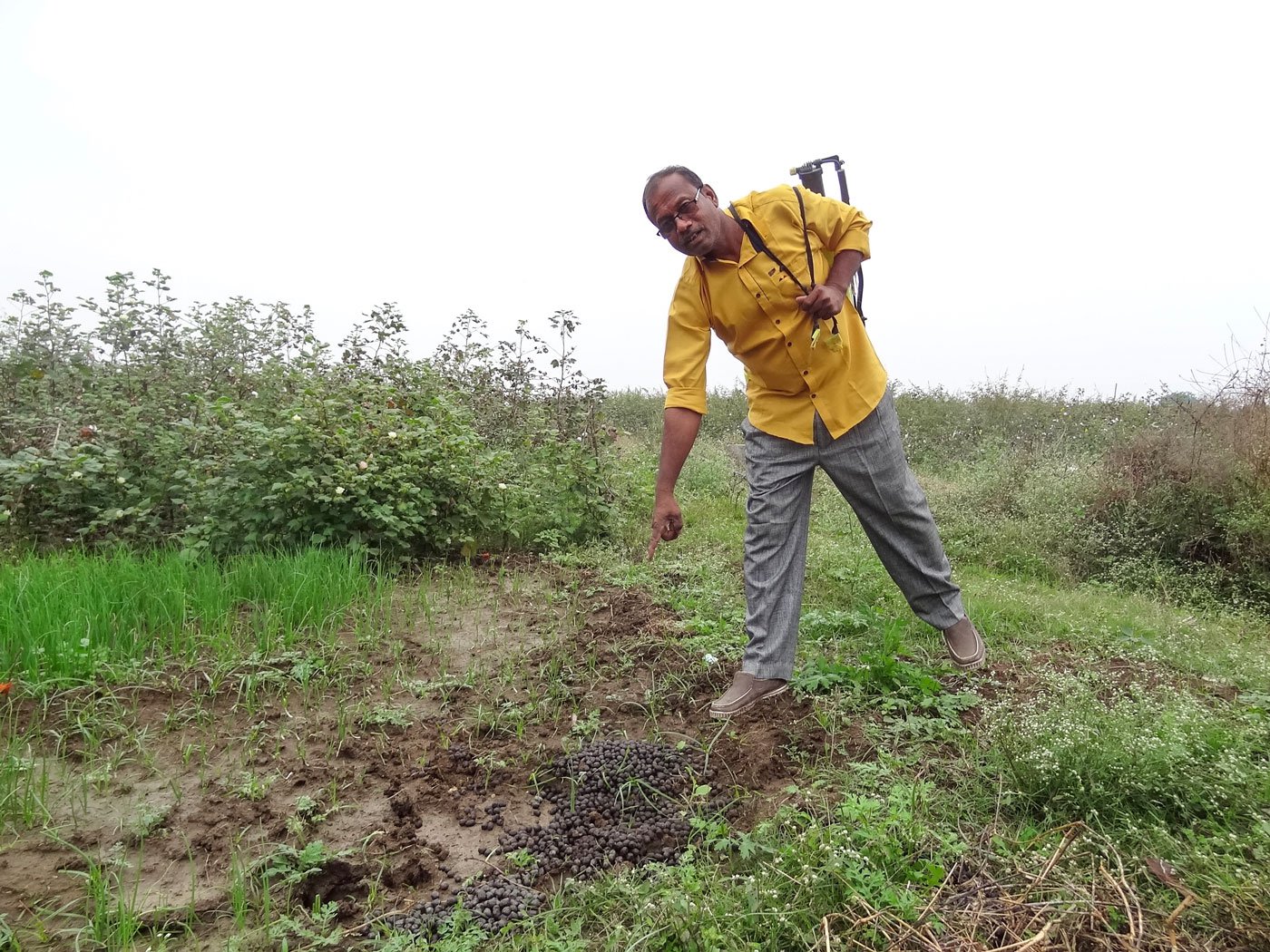
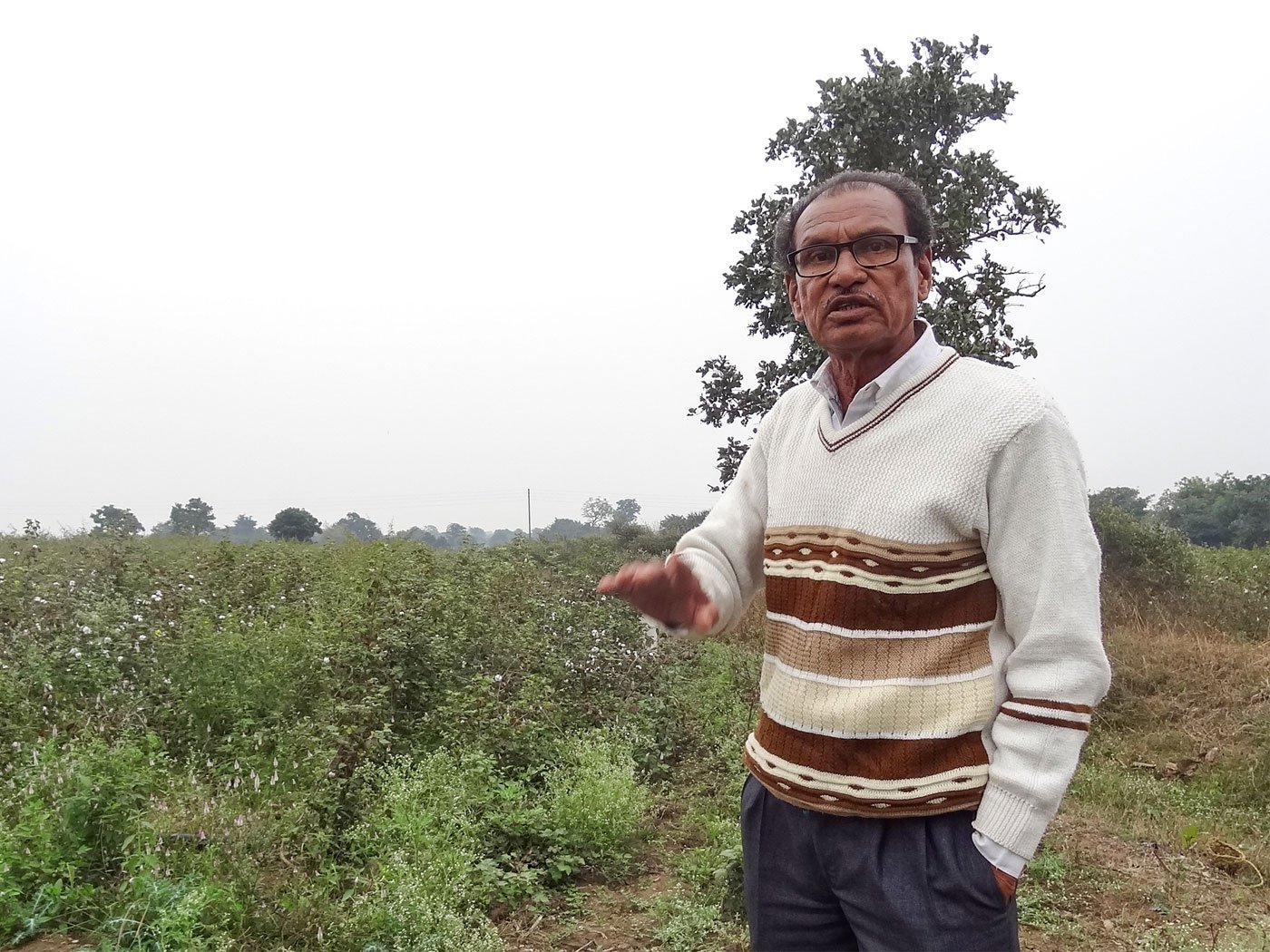
Left: Suresh Renghe points to fresh dropping of a wild boar on his farm. Right: Ramesh Sarode, a veteran farmer and social leaders in Mangi village, is vexed by the animal raids that seem to have no solution
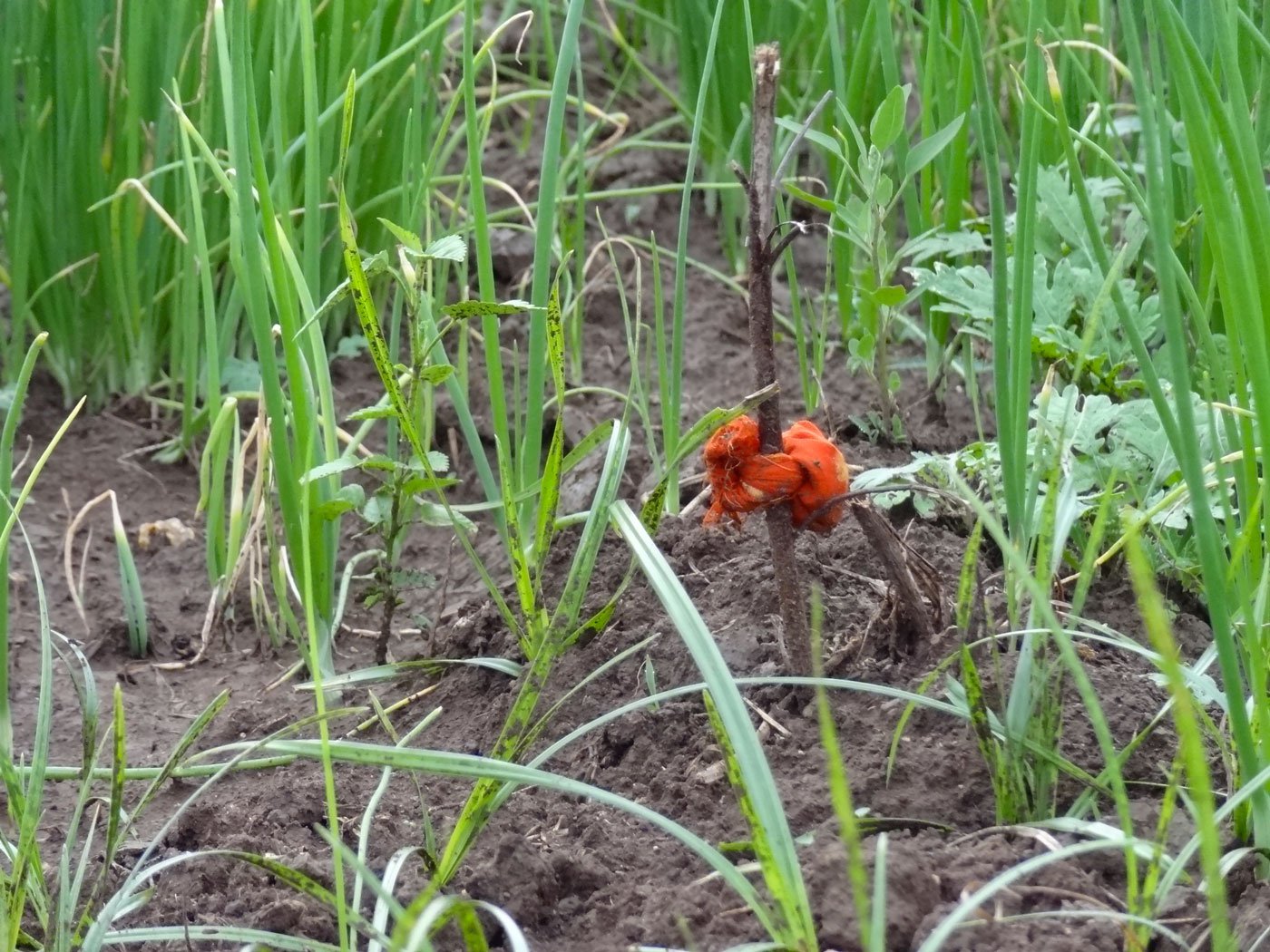
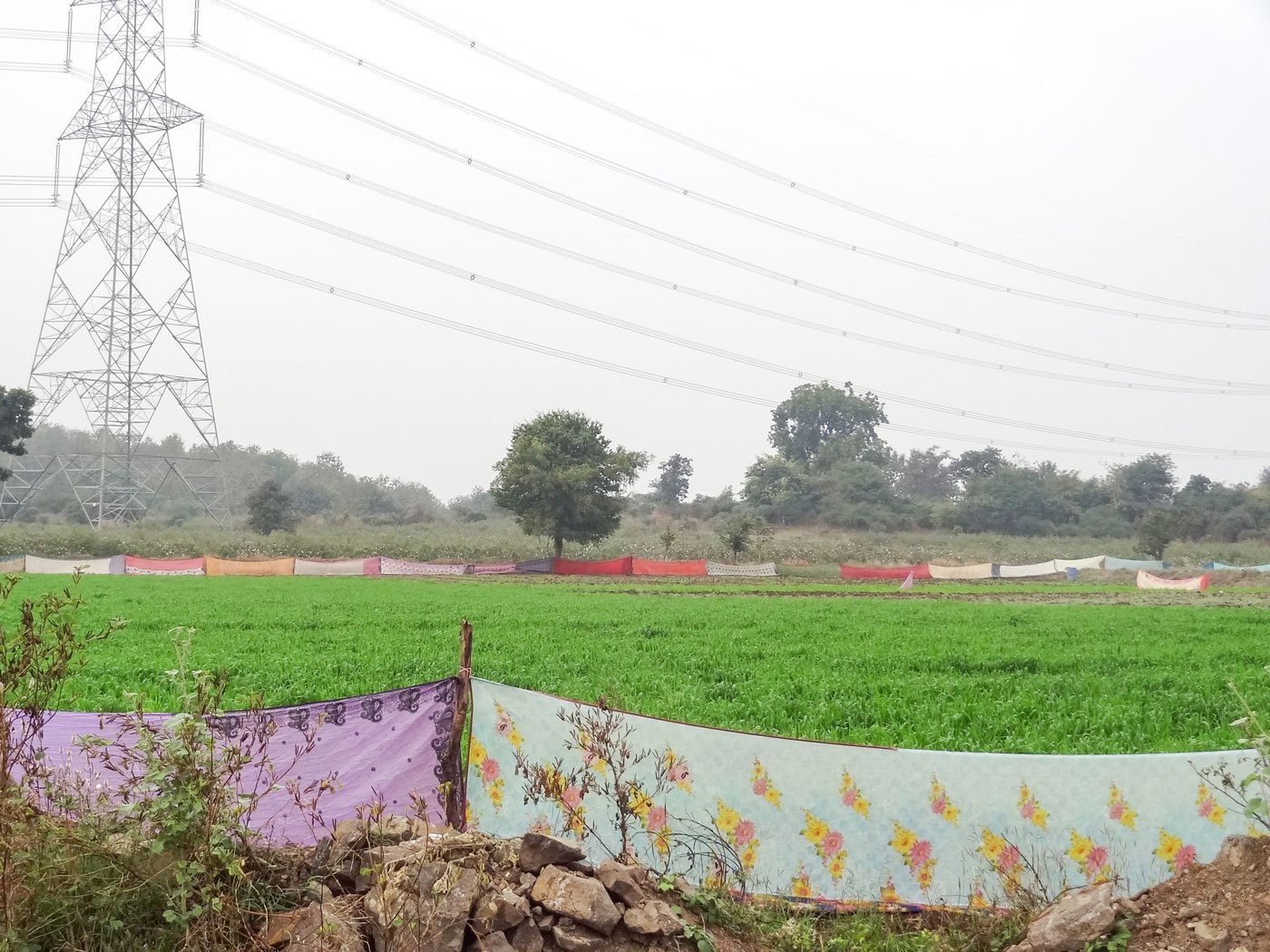
Farmers are trying various ideas to keep wild animals out. Some farmers tie naphthalin balls tied to the plant (left) and believed to repulse animals with the smell. A cost-effective way solution is using synthetic sarees (right) as fences
“There’s no solution to this problem,” rues Sarode, who keeps part of his land fallow – a small parcel that’s not contiguous to his larger holding. “If we stay awake to keep vigil through the nights, we fall sick; if we sleep, we lose our crop – what do we do!”
Such is the gravity of the problem that in many parts of Vidarbha where forests are interspersed with agricultural fields, some small or marginal farmers keep their lands fallow. They are unwilling to take on the likelihood of sudden loss, the energy, time, and money needed to raise a crop and also keep vigil round the clock at the cost of their health.
You can’t win against wild animals, joke the farmers who are now reconciled to giving up part of their yield to this menace.
Every morning, Renghe walks to his farm – praying for the best, prepared for the worst.
